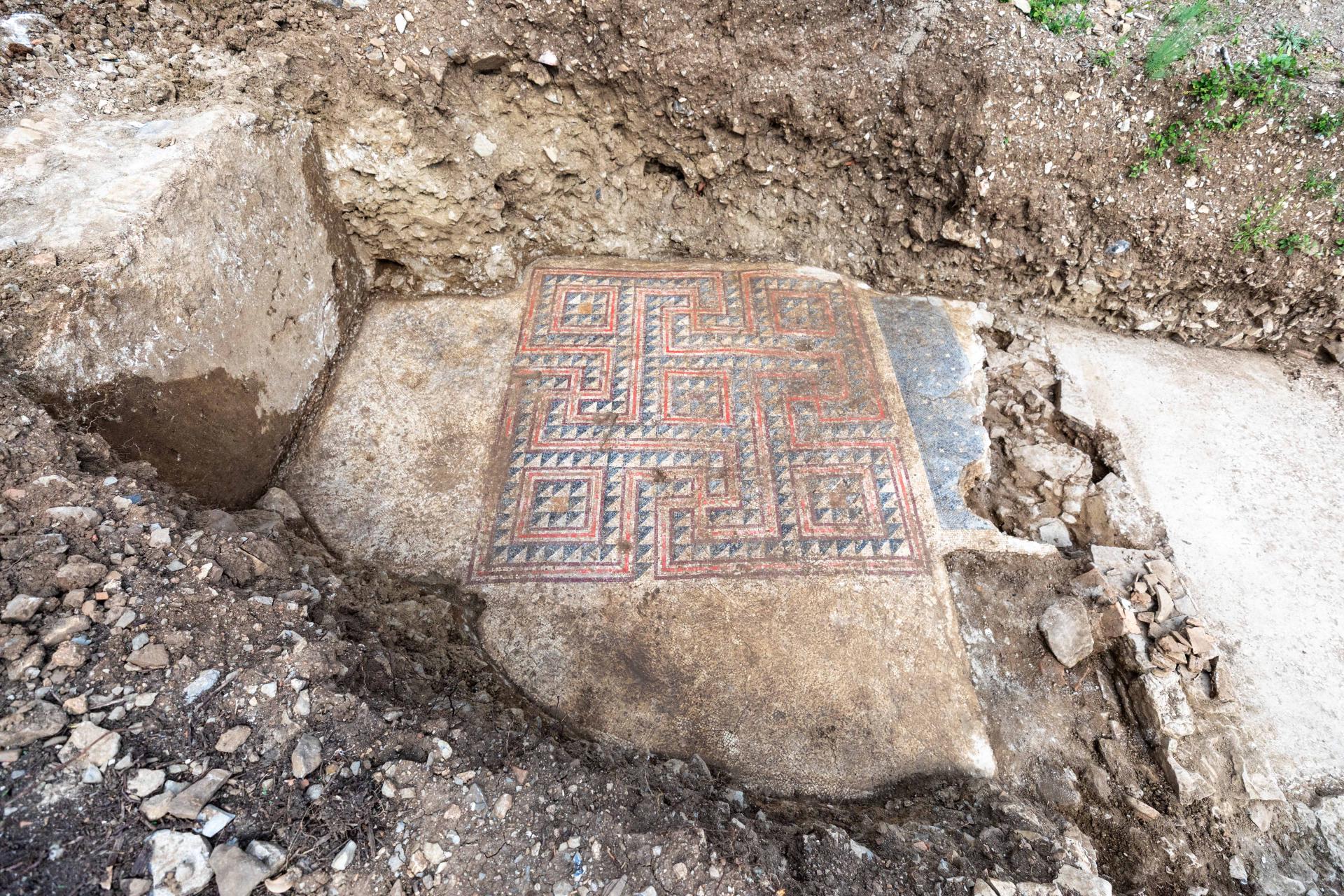

A recently excavated ancient Roman-era settlement on the slopes of Hermitage Hill in southern France has revealed remarkably well-preserved remains, including mosaic floors, advanced drainage systems, and burial grounds.
Led by France’s National Institute for Preventive Archaeological Research (Inrap), the excavation covered 3,750 square meters near the town of Alès. The work, carried out under the supervision of the French Ministry of Culture, uncovered traces of continuous occupation from the 2nd to the 6th century A.D.
Among the most striking discoveries is a colorful mosaic floor measuring 4.5 by 3.8 meters, located within a room that once formed part of a large Roman residence.
The ancient Roman mosaic floors feature a pattern of interwoven black-and-white shapes, with select tiles shaded in red, yellow, and purple tones. The central design, known as a “carpet,” includes geometric interlacing enhanced with bright pigments. Early analysis suggests the use of cinnabar, a rare and valuable mineral pigment at the time.
The surrounding layout indicates the space may have served as a formal room, possibly within a domus – an urban house often owned by members of the upper class. Adjacent sections with plain white tiles may have supported furniture or served as small alcoves.

A strip decorated with white crosses on a black background likely marked the entrance to another part of the building.
The residence appears to have undergone several construction phases. Its earliest floor was made of compacted earth, later replaced by lime concrete paving. In some sections, mosaic tiles were added, pointing to ongoing upgrades and attention to detail.
Archaeologists also uncovered an engineered water management system designed to handle rainwater. A drain constructed from interlocked fragments of large clay jars carried water from the roof, protecting the structure from potential damage.
The system used amphorae with cut ends fitted into each other, forming a continuous channel. The technique highlights the practical knowledge of Roman builders.

Elsewhere on the site, researchers documented four smaller homes partly built into the natural limestone bedrock. These dwellings used clay-coated walls to prevent water from seeping through the limestone during storms.
The floors rested on a packed layer of brazier—a mixture of crushed stone and limestone powder—supporting concrete or slab finishes. Faint traces of wall paintings also survive, offering rare hints of interior decoration. The design reflects careful adaptation to the environment and practical engineering skills.
To the south of the main excavation area, the team discovered a small burial site dating from the mid-5th to late 6th century A.D. Ten graves were found with heads facing west, suggesting they once held wooden coffins.
Most lacked personal items, but two nearby isolated burials point to continued use of the land into the later Roman period. Some graves were covered with stone slabs, and radiocarbon dating will help confirm the burial timeline.

The findings provide a detailed look at daily life, architecture, and burial practices in Roman Gaul. Researchers say further study may reveal more about the social and economic status of the people who once lived on Hermitage Hill. The land later evolved into terraced plots during the 16th to 18th centuries, with additional reshaping in the 19th century.
